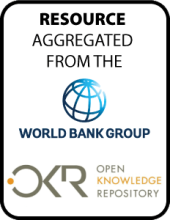Land Library
Welcome to the Land Portal Library. Explore our vast collection of open-access resources (over 74,000) including reports, journal articles, research papers, peer-reviewed publications, legal documents, videos and much more.
/ library resources
Showing items 1 through 9 of 99.Over the past 30 years, real GDP in Ghana has more than quadrupled, and in 2011 the country joined the ranks of Lower Middle-Income Countries (LMICs).
This note is part of an Action Notes series and provides guidance for governments on how to create an investment climate that is conducive to attracting high-quality, responsible investment in agriculture.
Violent conflicts between nomadic herders from northern Nigeria and sedentary agrarian communities in the central and southern zones have escalated in recent years and are spreading southward, threatening the country’s security and stability.
Integrated Landscape Approaches for Africa’s Drylands presents emerging findings on the importance of moving beyond single-sector interventions to embrace integrated landscape management that takes into account the health of the ecosystems that support human livelihoods and contribute to the resi
This topic guide for government agencies, service providers and other practitioners examines various dimensions of governance that are key to deliver appropriate benefit-sharing, ensure sustainable exploitation, minimise conflict over access and control, and maximise the contribution of resources
This paper investigates how land size
measurements vary across three common land measurement
methods (farmer estimated, Global Positioning System (GPS),
and compass and rope), and the effect of land size
Agricultural water management projects
that take an inclusive, participatory gendersensitive
approach at all levels of the project
cycle help increase project effectiveness and
improve account of livelihood concerns of
women and the rural poor. Participatory
China is considered one of the most seriously eroded countries in the world. The
many causes of this degradation can be divided into natural, human-induced and root causes.
The consequences of watershed degradation are severe and reach even beyond the country’s
Rice is the world’s most heavily
consumed staple crop. Its production requires enormous
volumes of water and emits large quantities of atmospheric
methane, a greenhouse gas some many times more powerful than





